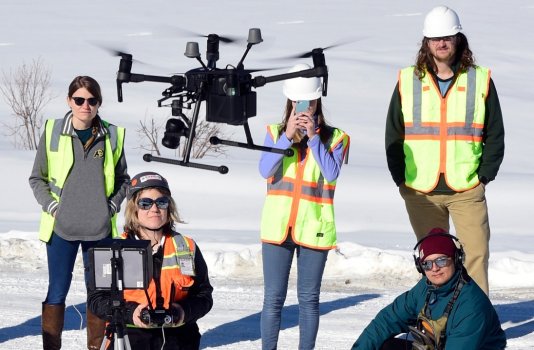Day of the drones: their rise across multiple industries
- Technology Solutions
- 0 Replies
From advertising and food delivery to construction and agriculture, drones are increasingly being used across multiple industries.
The arrival of Drones
Drones first took to the skies at the start of World War I, when they were used for military attacks on enemies. The design and application of drones have dramatically evolved from the initial radio-controlled plane designs.
In 2013, Amazon announced their interest in using the tech, bringing it to a consumer audience. From then, drones became more and more popular. After their arrival, critics predicted that consumer drones would soon fade away and were merely a fun piece of technology that lacked longevity.
What are drones used for today?
But drones went through a renaissance when it was realised they could offer safety and efficiency to many industries. They now fly in all shapes and sizes supporting many sectors, such as agriculture, construction, emergency response and fire-fighting.
Rabih Bou Rached, Founder of FEDs Drones, told Euronews that drones are helping farmers to predict disease and calculate yield.
"When I start flying every season, I start getting actual data. So, we know, our control data was that this season, what is that next season? So, eventually, we can start predicting the yield and the spreading of disease because we have data that can be translated."
Continue reading: https://www.euronews.com/next/2022/01/31/day-of-the-drones-their-rise-across-multiple-industries
The arrival of Drones
Drones first took to the skies at the start of World War I, when they were used for military attacks on enemies. The design and application of drones have dramatically evolved from the initial radio-controlled plane designs.
In 2013, Amazon announced their interest in using the tech, bringing it to a consumer audience. From then, drones became more and more popular. After their arrival, critics predicted that consumer drones would soon fade away and were merely a fun piece of technology that lacked longevity.
What are drones used for today?
But drones went through a renaissance when it was realised they could offer safety and efficiency to many industries. They now fly in all shapes and sizes supporting many sectors, such as agriculture, construction, emergency response and fire-fighting.
Rabih Bou Rached, Founder of FEDs Drones, told Euronews that drones are helping farmers to predict disease and calculate yield.
"When I start flying every season, I start getting actual data. So, we know, our control data was that this season, what is that next season? So, eventually, we can start predicting the yield and the spreading of disease because we have data that can be translated."
Continue reading: https://www.euronews.com/next/2022/01/31/day-of-the-drones-their-rise-across-multiple-industries
























